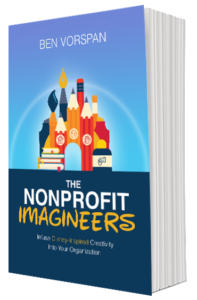
What Nonprofits Must Do to Create True Community
We love to talk about how welcoming our organizations are. We say things like “we’re like family,” or “everyone is welcome here.” And for some, that’s true.
But here’s the uncomfortable reality:
Not everyone feels like they belong.
And if we don’t name that truth, we can’t fix it.
Belonging isn’t just a warm-and-fuzzy feeling—it’s a core human need. In the nonprofit world, especially in faith-based or identity-driven spaces, belonging is often what draws people in and what keeps them connected.
So when someone doesn’t feel that sense of belonging—when they feel invisible, excluded, or “not the right fit”—it matters. It means we’re leaving potential impact, connection, and generosity on the table.
And that’s our problem to solve.
Inclusion ≠ Belonging
It’s easy to conflate inclusion with belonging. Inclusion is about access—making sure people can attend, join, or participate. Belonging is about emotional connection—making sure people feel wanted, valued, and seen once they do.
Someone can be included in a room and still feel completely alone.
They might be:
The only young family at a program full of retirees.
A Jew of color in a space where no one pronounces their name correctly.
A donor who isn’t wealthy, but gives deeply—and still feels less important.
A staff member who brings a new perspective, only to be met with resistance.
These moments may seem small. But together, they shape whether someone sees your organization as their community or someone else’s.
Community as a Designed Experience
This is where nonprofits can take a cue from Disney Imagineering.
Imagineers don’t leave anything to chance—they intentionally design every touchpoint to support a specific emotional journey. From the lighting to the signage to the storylines, everything signals: You belong here. This place was made for you.
We should approach community the same way.
Belonging doesn’t happen accidentally. It must be designed, tested, and refined. It’s not a single action—it’s a culture built on empathy, feedback, and inclusion at every level.
What Can We Do Differently?
If we want people to truly feel like they belong, we have to do the hard, vulnerable work of asking: Who doesn’t? And then: Why not?
Here are a few places to start:
Audit your spaces — physical and digital. Do they reflect the full diversity of your community? Are they accessible? Are they welcoming beyond just being functional?
Listen deeply. Conduct community conversations, listening sessions, or anonymous surveys that explore people’s sense of belonging and barriers to it.
Empower culture-bearers. Identify and invest in the informal leaders who naturally create warmth, connection, and safety. Put them at the center of your community-building strategies.
Center the margins. Ask: Who is often left out of the room or the conversation? What would it look like to start with their needs?
Shift the metric. Instead of asking “how many people came?” ask “who came back—and why?”
A Better Kind of Growth
Every nonprofit wants to grow—more members, more impact, more support. But real growth doesn’t start with numbers. It starts with belonging.
People stay when they feel like they matter.
People give when they feel like they’re part of something meaningful.
People lead when they feel like they’re needed.
So let’s stop assuming people feel welcome—and start designing belonging with the same care we give to strategy, budgets, and branding.
Because the best version of your community isn’t the one that says “everyone is welcome.”
It’s the one where everyone already knows they are.
 Celebrate 2 years of Imagineering!
Celebrate 2 years of Imagineering!
Comments are closed